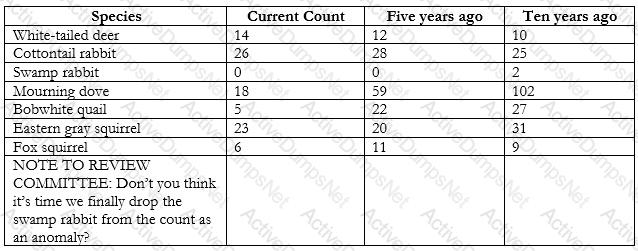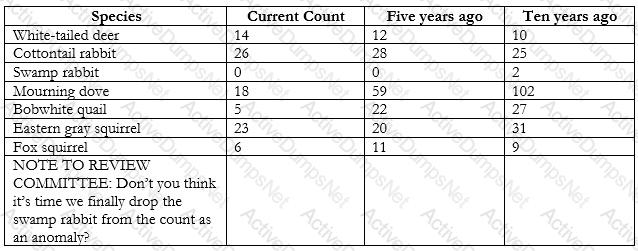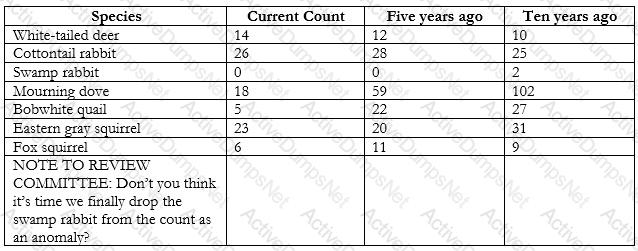Microsoft 77-725 Microsoft Word 2016 Core: Document Creation, Collaboration and Communication (MOS) Exam Practice Test
Microsoft Word 2016 Core: Document Creation, Collaboration and Communication (MOS) Questions and Answers
Project 5 of 7: Housekeeping
Overview
You are helping to write training program modules for Contoso Suites. You are editing the second module for housekeeping associates.

Start of Shift
The first thing you should do when you start your shift is check your schedule. The shift supervisor will provide you with a printed schedule listing the rooms for which you are responsible, and a recommended order for cleaning the rooms. Unless an early cleaning is requested by the guest, check-out rooms are given priority so that we can prepare them for the next guests.
Use the inventory checklist attached to your cleaning cart to make sure that your cart is fully stocked before you begin your rounds.

Room Cleaning
When you are ready to clean a room, knock and announce yourself as “Housekeeping.” Give the guest sufficient time to respond (10 to 15 seconds). If the guest does not respond, let yourself into the room and begin cleaning.
Start by cleaning the common room and sleeping areas. It is best to follow consistent steps when cleaning rooms. This will help to prevent you from missing anything. In the common room and sleeping area:
- Pick up and dispose of any trash.
- Empty trash cans.
- If the guest has checked out, replace the sheets on each bed with fresh sheets.
- Make the bed.
- Leave a “Contoso Special Treat” on each pillow.
- Dust all wooden furniture.
- Clean the coffee station (if necessary) and restock coffee, cups, and condiment packs.
- Vacuum the common room and sleeping areas.
Do not open the courtesy bar. Checking and restocking the courtesy bar is the shift supervisor’s responsibility.
It is important that you give special attention to the restrooms. The most common guest complaint is about restroom cleanliness. We recommend a “top-down” cleaning method for restrooms:
- Clean all mirrors.
- Clean countertops and sinks.
- If damp, wipe down the shower and shower curtain.
- If necessary, replace toilet paper.
- Replace used towels and wash cloths.
- Pick up any trash and empty trash cans.
- Sweep the restroom floor and mop if necessary.
Final Check
Make a final check of the room before leaving.
Are the lights turned off?
Are the TV and coffee station turned off?
Is all trash picked up and disposed of?
Is the restroom door closed?
Close the door firmly and make sure that it locks behind you. Text your supervisor with the room number.
End-of-Shift
When you are finished, dispose of all trash in the large receptacles. Drop all sheets, towels, and other lines into the laundry carts. Restock your cart so that it is ready for the next shift.
If you have more than 30 minutes left after you have completed your assigned rooms, contact your supervisor for additional assignments.

Change the bulleted list to Picture bullets based on Check.jpg in the Pictures folder.
Project 4 of 7: Member
Overview
You are preparing a letter to museum members announcing a new exhibit and urging them to renew their membership.

Apply the WordArt style Gradient Fill – Gray to the text “Dinosaurs, Dinosaurs” located at the top of the document. Align the WordArt to the center of the document.
Project 1 of 7: Observation
Overview
You are a member of the Barstow College Observation Project committee. You are preparing the initial summary report for this year’s count, but have not received all of the data you need to complete the report.

Introduction
The multi-departmental Wildlife Observation Project has completed its wildlife population counts for this year. The counts were made between May 5 and May 7 for both the wilderness and cultivated land areas. This is in line with the count periods for all previous years. The species used for the counts have been identified as common for the region (central Missouri) in which the counts were taken. (Author, 2009)
As in previous years, five observation blinds were set up two weeks before the counts were to take place. Counters worked eight-hour shifts providing 24-hour coverage of the count areas for two days. Weather for both observation days was clear and mild (varying between 50-70 degrees F).
The results presented here are summary total results only, which counts from five and ten years ago provided for comparison. Detailed observation results will be available as soon as they are completed. We estimate that they will be available some time in the next two weeks.
Wilderness Summary
The wilderness observation area is a five-acre section of unimproved forest land. The most common trees in the area are maple, red oak, cedar, sweet gum, and hickory. The area also includes a small spring. The area is not enclosed by a fence or other man-made barrier.
The area is located eight miles from the nearest paved road and twelve miles from the nearest residence. Off-road vehicles were used to bring counters close to, but not entering, the count area. The nearest approach by off-road vehicles was one mile.
The table below lists the summary counts.

Though further research any analysis is needed, the drop in mourning dove and bobwhite quail counts could be significant. The detailed count data shows these numbers failing off each year.
Cultivated Land Summary
The cultivated land observation area is a five-acre section of cultivated land near the center of a 50-acre field. The field is used to grow corn, wheat, soybeans, and clover, with the crop rotated annually. In the fifth year of the cycle, the field is left fallow.
The area is located two miles from the nearest paved road and one mile from the nearest residence. A storage barn is located at the southern border of the field.
The table below lists the summary counts.
Additional Notes
This project was initially scheduled to run for ten years, so we are currently in our last year. The committee needs to decide if it is worth the time and expense to continue the project. The landowners have experience that they would be happy to let us continue. Costs relating to the project is minimal and it does provide an opportunity to offer extra credit to students volunteering as counters.
A suggestion has been made by some committee members that we should increase the count frequency, counting on a quarterly schedule instead of an annual schedule. This would need to be coordinated with the owner of the cultivated field so that we do not interfere with planting or harvesting schedules.
Special Thanks
Once again, we would like to offer special thanks to:
We couldn’t do this without you.
In the table below the “Wilderness Summary”, adjust the column width so that all columns are the same width.
Project 1 of 7: Observation
Overview
You are a member of the Barstow College Observation Project committee. You are preparing the initial summary report for this year’s count, but have not received all of the data you need to complete the report.

Introduction
The multi-departmental Wildlife Observation Project has completed its wildlife population counts for this year. The counts were made between May 5 and May 7 for both the wilderness and cultivated land areas. This is in line with the count periods for all previous years. The species used for the counts have been identified as common for the region (central Missouri) in which the counts were taken. (Author, 2009)
As in previous years, five observation blinds were set up two weeks before the counts were to take place. Counters worked eight-hour shifts providing 24-hour coverage of the count areas for two days. Weather for both observation days was clear and mild (varying between 50-70 degrees F).
The results presented here are summary total results only, which counts from five and ten years ago provided for comparison. Detailed observation results will be available as soon as they are completed. We estimate that they will be available some time in the next two weeks.
Wilderness Summary
The wilderness observation area is a five-acre section of unimproved forest land. The most common trees in the area are maple, red oak, cedar, sweet gum, and hickory. The area also includes a small spring. The area is not enclosed by a fence or other man-made barrier.
The area is located eight miles from the nearest paved road and twelve miles from the nearest residence. Off-road vehicles were used to bring counters close to, but not entering, the count area. The nearest approach by off-road vehicles was one mile.
The table below lists the summary counts.

Though further research any analysis is needed, the drop in mourning dove and bobwhite quail counts could be significant. The detailed count data shows these numbers failing off each year.
Cultivated Land Summary
The cultivated land observation area is a five-acre section of cultivated land near the center of a 50-acre field. The field is used to grow corn, wheat, soybeans, and clover, with the crop rotated annually. In the fifth year of the cycle, the field is left fallow.
The area is located two miles from the nearest paved road and one mile from the nearest residence. A storage barn is located at the southern border of the field.
The table below lists the summary counts.
Additional Notes
This project was initially scheduled to run for ten years, so we are currently in our last year. The committee needs to decide if it is worth the time and expense to continue the project. The landowners have experience that they would be happy to let us continue. Costs relating to the project is minimal and it does provide an opportunity to offer extra credit to students volunteering as counters.
A suggestion has been made by some committee members that we should increase the count frequency, counting on a quarterly schedule instead of an annual schedule. This would need to be coordinated with the owner of the cultivated field so that we do not interfere with planting or harvesting schedules.
Special Thanks
Once again, we would like to offer special thanks to:
We couldn’t do this without you.
Merge all cells in the bottom row of the table below the “Wilderness Summary” heading into one cell.
Project 1 of 7: Observation
Overview
You are a member of the Barstow College Observation Project committee. You are preparing the initial summary report for this year’s count, but have not received all of the data you need to complete the report.

Introduction
The multi-departmental Wildlife Observation Project has completed its wildlife population counts for this year. The counts were made between May 5 and May 7 for both the wilderness and cultivated land areas. This is in line with the count periods for all previous years. The species used for the counts have been identified as common for the region (central Missouri) in which the counts were taken. (Author, 2009)
As in previous years, five observation blinds were set up two weeks before the counts were to take place. Counters worked eight-hour shifts providing 24-hour coverage of the count areas for two days. Weather for both observation days was clear and mild (varying between 50-70 degrees F).
The results presented here are summary total results only, which counts from five and ten years ago provided for comparison. Detailed observation results will be available as soon as they are completed. We estimate that they will be available some time in the next two weeks.
Wilderness Summary
The wilderness observation area is a five-acre section of unimproved forest land. The most common trees in the area are maple, red oak, cedar, sweet gum, and hickory. The area also includes a small spring. The area is not enclosed by a fence or other man-made barrier.
The area is located eight miles from the nearest paved road and twelve miles from the nearest residence. Off-road vehicles were used to bring counters close to, but not entering, the count area. The nearest approach by off-road vehicles was one mile.
The table below lists the summary counts.

Though further research any analysis is needed, the drop in mourning dove and bobwhite quail counts could be significant. The detailed count data shows these numbers failing off each year.
Cultivated Land Summary
The cultivated land observation area is a five-acre section of cultivated land near the center of a 50-acre field. The field is used to grow corn, wheat, soybeans, and clover, with the crop rotated annually. In the fifth year of the cycle, the field is left fallow.
The area is located two miles from the nearest paved road and one mile from the nearest residence. A storage barn is located at the southern border of the field.
The table below lists the summary counts.
Additional Notes
This project was initially scheduled to run for ten years, so we are currently in our last year. The committee needs to decide if it is worth the time and expense to continue the project. The landowners have experience that they would be happy to let us continue. Costs relating to the project is minimal and it does provide an opportunity to offer extra credit to students volunteering as counters.
A suggestion has been made by some committee members that we should increase the count frequency, counting on a quarterly schedule instead of an annual schedule. This would need to be coordinated with the owner of the cultivated field so that we do not interfere with planting or harvesting schedules.
Special Thanks
Once again, we would like to offer special thanks to:
We couldn’t do this without you.
Add a Status of “Requires committee review” to the document properties.
